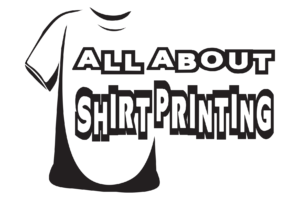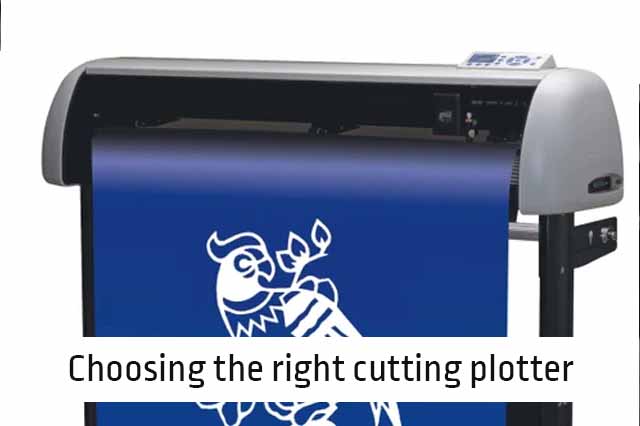Choosing the right cutting plotter: a comprehensive guide
Here you can find all the information about a cutting plotter
A review of cutting plotters
Cutting plotters are a versatile and powerful tool used in the sign and graphics industry. They enable precise cutting of vinyl, paper, card, fabric and other materials. Whether you’re looking to create complex designs or just basic shapes, cutting plotters are a great choice. When choosing a cutting plotter, it is important to consider the features, speed and accuracy of the machine.
The features of a cutting plotter can vary greatly, but some of the most common include a built-in keyboard, media holder, and LCD display. A built-in keyboard allows for easier operation, while a media holder prevents the material from slipping during the cutting process. The LCD display allows you to easily view work progress, as well as errors. In addition, many cutting plotters come with an easy-to-use software package that allows for simple design and setup.
In terms of speed and accuracy, the most important factors to consider are the cutting width and speed of the machine and the cutting pressure. Generally, the cutting widths range from 4 mm to 1.2 m, with speeds up to 1,000 mm per second (usually, it is recommended to start with a speed between 200-300 mm per second. This speed can be adjusted according to the needs of the In addition, some plotters have settings that allow you to set the speed to move the blade to the next cutting position when the blade is lifted from the material during the cutting operation). Different thicknesses, which require a different machine and cutting method, so it is important to check what cutting pressure the plotter is able to provide. Most plotters are able to provide pressure between 10-600 g. For most materials you will not need high pressure but if you want to cut thick or hard materials you will need a plotter with which is able to provide as much pressure as possible when cutting.
Another thing to pay attention to is the angle of the knife: most plotters work with knives at an angle of 45 degrees, but when a deeper cut is needed it is necessary to use a knife with a sharper angle (30 degrees). That is why it is important to make sure that the plotter supports several options for the angle of the cutting blade.
Another important consideration is to check whether you need a cutting plotter that can detect cutting marks and perform contour cutting? Some models have an electronic eye that can detect crop marks so the plotter can cut media after it has been printed. This ability allows you to cut not only vinyls or materials in one color, but also vinyls and stickers that have been printed in color and then cut to the desired shape.
Considerations for choosing a cutting plotter
Choosing a cutting plotter is not an easy task, as there are many considerations that need to be taken into account in order to choose the right tool for your cutting needs:
First, you need to consider the type of materials that you will need to cut: if the main purpose is to cut vinyl you will not need a plotter with the ability to provide the highest cutting pressure (unlike, for example, cutting reflective stickers that require high knife pressure).
Second, you need to think about the cutting speed you need. Some plotters cut faster than others, so if you need to cut a large number of items quickly, you should choose a faster cutting device. In addition, you should take into account the accuracy of the cutting plotter and make sure it is suitable for the type of cutting you will be doing (cutting small details requires more precision).
In addition, so that you know if you will need to cut printed materials: not all plotters come with the possibility of cutting after printing, but on the other hand – not every business needs this ability (which of course affects the price).
Check the customer service and support offered by the company from which you buy the plotter. You want to make sure you have access to help if you need it and that the company is ready to answer your questions or address any concerns you may have.
Finally, the software you use with the cutting plotter is important, as it must be compatible with the cutting plotter you purchase. The software should be user-friendly and offer features such as vector tracking, precise cutting and material optimization. Asking questions about software and plotter compatibility before buying is always a good idea. Note that some plotters have their own dedicated software or work with Flexi software. If you are used to working on Illustrator or Coreldro software – check if there is a plug-in that can allow you to cut from the programs you are used to using.
Finally, it is important to take into account the budget available to you and choose a cutting plotter that is in your price range.
Tips for choosing the right cutting plotter
The first tip is: don’t rush! You are going to invest money on a product that should serve you for years, so you should not rush and buy the first device you see.
Second thing: the price is not the most important thing! The criterion for choosing a plotter is – ‘Is it able to fulfill your requirements?’
Third thing: not always the most expensive is the best! If you need a machine that will take up a small work area – don’t invest in a machine with a large cutting area… Another example of this is that if you don’t have a wide format printer you probably won’t need a plotter with an electronic eye…
Another tip: always prefer a plotter from a known company! There are a wide variety of companies that supply plotters for cutting and at cheaper prices than the well-known companies, but if you encounter a problem, chances are you will find much more information about the repair and operation of the plotter if it is from a well-known company.
Note that the cutting knives need to be replaced from time to time, and here too a plotter from a well-known company is better – you will find a variety of non-original knives that will fit your plotter, something that is not always present in the plotters of the cheap companies.
Tips for getting the most out of your cutting plotter
Cutting plotters are becoming more and more popular for making complex shapes and designs with minimal effort and time. With the help of the right cutting plotter, you can produce quality products with exact dimensions and precision. Choosing the right cutting plotter can be a daunting task; Here are some tips you can use to get the most out of your cutting putter:
First, are you using all of the plotter’s capabilities? Plotters can cut a wide variety of materials, so you should increase the range of products you provide.
A second option is to become a manufacturer: there are private individuals or businesses that occasionally need a cutting service but have no reason to buy the machine. You will be able to provide cutting services to these people (for example, I am in the business of printing shirts but I have clients who need cutting of sandblasting stickers – and I cut them for them).
Another thing to do is to study the plotter from all directions so you can solve problems yourself instead of waiting for a technician in case of a problem and you won’t waste time when the machine is not working.
Summary:
So as we have seen, when buying a plotter you need to consider several components and we will divide them into two: your requirements and the capabilities of the plotter. In terms of your requirements, pay attention to diagnose what materials you are going to work with, what are the requirements of the material, what software are you comfortable using, and what is your current financial ability to invest in a plotter? After that, you will test the capabilities of the plotter itself: is it able to cut the materials you will use? In terms of space and the size of the materials, is the plotter suitable? And do you have enough support in case of a malfunction (sometimes the best support service is YouTube..). Good luck!

